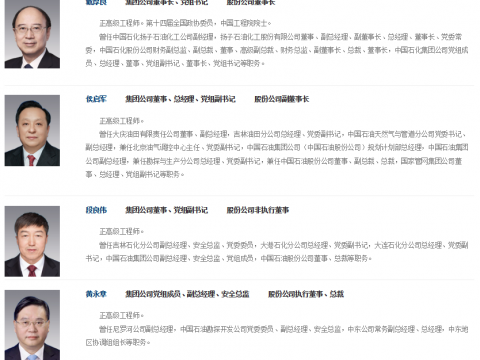由于世界各国努力减少碳排放,提高城市交通的便利性和成本,各国正在探索新的、令人兴奋的出行方式
2020年,全球移动服务市场价值2600亿美元,预计到2030年结束前将增加至6600亿美元
新兴市场在这方面有一个特别有趣的机会,可能会跳过传统的交通方式,并拥抱更新的创新形式
据美国油价网8月28日报道,由于全世界都在寻求减少碳排放、改善城市交通的便利性和成本,各国正在探索新的出行服务形式,从叫车服务和共享单车应用程序,到电动汽车充电站和智能停车场。奥威曼论坛和加州大学伯克利分校交通研究所(ITS)最近对北美、欧洲和亚洲的13项服务进行了调查研究,其结果显示,全球移动服务市场将从2020年的2600亿美元增长到2030年的6600亿美元。
这为新兴市场提供了一个更快速、更有效地跨越传统交通模式的机会,与语音通信领域的类似发展相似,各国正在从固定电话转向移动电话以及Skype或Zoom等基于云计算的会议工具。
地区增长趋势
在奥威曼论坛—ITS报告中提到的3个地区中,欧洲地区预计将出现电动汽车和充电服务最强劲的扩张,这是由欧盟提出的到2030年前将汽车碳排放减少55%和到2035年前禁止使用化石燃料汽车的计划所推动的。
据预测,未来十年,非洲地区的移动业务收入将从2020年的568亿美元上升到1439亿美元,占全球市场份额的20%。
与此同时,在北美地区,智能停车支付服务有望成为增长最快的领域,在此期间,移动支付收入将从663亿美元增长到1753亿美元,占全球市场份额的25%。
然而,或许最有趣的增长故事——也是新兴市场最佳实践的一个例子——是亚洲。亚洲已经拥有一个强大的共享服务市场,将通信、商业和运输结合在一个平台上。其移动业务收入预计将从2020年的1339亿美元增加到2030年的3370亿美元,相当于全球市场份额的50%左右。在这一增长中,汽车租赁预计占343亿美元,网约车占1263亿美元。
交通工具的未来
在全球范围内,改善大城市交通和减少碳排放的一个关键机会是通过电动汽车和充电站提供的汽车共享和叫车服务,根据彭博新能源财经最近发布的《长期电动汽车展望》报告,全球电动汽车销量预计到2025年前将增长两倍。
汽车共享在新兴市场的许多大城市已经司空见惯。例如,由于人口众多、城市空间密集以及注册和拥有汽车的困难,印度成为网约车服务普及的领头羊。印度是亚洲领先的拼车市场,特别是在通勤的It工作者中,并与第三方企业合作,以扩大汽车订购市场。
在日本软银集团的支持下,印度叫车公司Ola Electric目前生产电动踏板车,并计划在2024年前开始生产行驶里程为500公里的电动汽车。
就越南而言,三大网约车平台——Grab、Gojek和Be——的竞争非常激烈,自2015年以来,其营收年增长率达到了30%~35%。预计越南网约车服务市场收入将从2021年的24亿美元增至2025年前的40亿美元。
其他地区交通工具共享
网约车也在其他地区取得了进展。根据MarkNtel的一份报告,受城市化和私家车拥有成本高的推动,2021年至2026年间,拉丁美洲的汽车共享业务预计将实现26%的复合年增长率。
根据Business market Insight的数据,在中东和非洲,网约车服务市场的营收预计将从2021年的41亿美元扩大到2028年的74亿美元,年复合增长率为9%,其中网约车在2020年的新增长中占据相当大的份额。
与此同时,在非洲,位于拉各斯的州政府于今年3月启动了LagRide,作为其多式联运发展蓝图的一部分。这个计划旨在逐步淘汰旧的商业出租车,用新的车辆取代它们,并包括网约车的选项。
微出行机会
较小规模解决方案,如电动踏板车、轻便摩托车和共享摩托车——统称为“微出行”——在新兴市场也具有巨大的增长潜力。
根据奥威曼论坛—ITS报告,亚洲共享单车的收入预计将从2020年的62亿美元增长到2030年的140亿美元,而电动踏板车和轻便摩托车的收入预计同期将分别增长3亿美元和11亿美元。
自疫情暴发以来,许多通勤者和城市居民都将自行车作为公共交通的更安全选择。在拉丁美洲,巴西的微出行初创企业Tembici占阿根廷、巴西和智利共享单车设备的72%。该公司报告称,2020年的出行量增长34%,2021年的收入增长40%。
与此同时,拉各斯政府与AWA Bike合作,去年在尼日利亚推出了第一款共享单车应用。这个1000辆自行车的试点项目是拉各斯自行车共享计划的一部分,该计划旨在为人们在这个巨型城市中出行提供更便宜、更环保的方式。
由于出行和微出行服务的范围不断扩大,不同地区、国家和城市将有潜力采用和扩大服务,以满足其个人需求,为创新和投资提供细分市场机会。
李峻 编译自 石油价格网
原文如下:
The Future Of Transportation In Emerging Markets
· As the world moves to reduce emissions and improve urban the ease and cost of urban transport, countries are exploring new and exciting forms of mobility.
· The global market for mobility services was worth $260 billion in 2020 and is expected to grow to be worth $660 billion by the end of the decade.
· Emerging markets have a particularly interesting opportunity here, potentially leapfrogging traditional transport modes and embracing new innovations.
As the world looks to reduce carbon emissions and improve the ease and cost of urban transport, countries are exploring new forms of mobility services, ranging from ride-hailing and bike-sharing apps, to electric-vehicle (EV) charging stations and smart parking. The global market for mobility services is set to grow from $260 billion in 2020 to $660 billion in 2030, according to a recent study from the Oliver Wyman Forum and the Institute of Transportation Studies (ITS) at the University of California, Berkeley, which looked at 13 services across North America, Europe, and Asia.
This offers emerging markets an opportunity to leapfrog traditional transport modes more quickly and efficiently, mirroring similar developments in voice communications as countries shifted from landlines to mobile phones and cloud-based conferencing tools such as Skype or Zoom.
Regional growth trends
Europe is expected to see the strongest expansion in EVs and charging services of the three regions covered in the Oliver Wyman Forum-ITS report, driven by the EU’s proposal to cut carbon emissions from cars by 55% by 2030 and its plan to ban fossil fuel cars by 2035.
Mobility revenue on the continent is forecast to rise from $56.8 billion in 2020 to $143.9 billion over the decade, for a global market share of 20%.
In North America, meanwhile, smart parking payment services are expected to be the fastest-growing area, with mobility revenue to rise from $66.3 billion to $175.3 billion over the period, for a market share of around 25%.
However, perhaps the most interesting growth story – and an example of best practices for emerging markets – is Asia.
Asia already has a robust market for shared services that combine communication, commerce, and transport in a single platform. Its mobility revenue is projected to increase from $133.9 billion in 2020 to $337 billion in 2030, equivalent to a global market share of around 50%. Of this growth, car rentals are expected to account for $34.3 billion and ride-hailing $126.3 billion.
The future of vehicles
Globally, a key opportunity for improving transport and reducing emissions in large cities is through car-sharing and ride-hailing powered by EVs and charging stations, with global EV sales forecast to triple by 2025, according to BloombergNEF’s recently published “Long-Term Electric Vehicle Outlook”.
Vehicle sharing is already commonplace in many large cities in emerging markets.
India, for example, serves as a bellwether for the uptake of ride-hailing services due to its large population, dense urban spaces, and the difficulty of registering and owning cars.
It is the leading carpooling market in Asia, especially among commuting IT workers, and is partnering with third-party players to grow the car subscription market.
Backed by Japan’s Softbank Group, Indian ride-hailing company Ola Electric currently produces electric scooters and plans to start manufacturing EVs with a range of 500 km by 2024.
Vietnam, for its part, is seeing fierce competition among its three ride-hailing platforms – Grab, Gojek, and Be – with an annual growth rate in revenue of 30-35% since 2015. Ride-hailing service market revenue is expected to rise from $2.4bn in 2021 to $4bn by 2025.
Transport-sharing in other regions
Ride-hailing is also gaining ground in other regions.
Latin America is expected to post a 26% compound annual growth rate (CAGR) in car-sharing between 2021 and 2026, according to a report from MarkNtel, fuelled by urbanization and the high cost of private vehicle ownership.
In the Middle East and Africa, for its part, the ride-hailing service market is expected to expand from $4.1 billion in revenue in 2021 to $7.4 billion in 2028, for a CAGR of 9%, according to Business Market Insight, with e-hailing comprising a substantial share of new growth in 2020.
Meanwhile, in Africa, the state government in Lagos launched LagRide in March as part of its multi-modal transport development blueprint. The scheme aims to phase out older commercial taxis and replace them with newer vehicles, and include an option for ride-sharing.
Micromobility opportunities
Smaller-scale solutions such as electric scooters, mopeds, and bike-sharing – collectively known as micromobility – also present significant growth potential in emerging markets.
Revenue from bike-sharing in Asia is expected to grow from $6.2 billion in 2020 to $14 billion in 2030, according to the Oliver Wyman Forum-ITS report, while electric scooters and mopeds are projected to post $300 million and $1.1 billion gains over the same period.
Many commuters and city dwellers have embraced bicycles as a safer alternative to public transport since the start of the Covid-19 pandemic. In Latin America, Brazilian micromobility start-up Tembici, which accounts for 72% of bike-sharing equipment in Argentina, Brazil, and Chile, reported a 34% increase in trip volume in 2020 and a 40% jump in revenue in 2021.
Meanwhile, the Lagos government, in partnership with AWA Bike, launched the first bike-sharing app in Nigeria last year. The 1000-bike pilot project is part of the Lagos Bike Share Scheme, which seeks to offer cheaper and more eco-friendly ways for people to move around the mega-city.
As the range and uptake of mobility and micromobility services continues to grow, different regions, countries, and cities will have the potential to adopt and scale services to fit their individual needs, offering niche opportunities for innovation and investment.
免责声明:本网转载自其它媒体的文章,目的在于弘扬科技创新精神,传递更多科技创新信息,宣传国家科技政策,展示国家科技形象,增强国家科技软实力,参与国际科技舆论竞争,提高国际科技话语权,并不代表本网赞同其观点和对其真实性负责,在此我们谨向原作者和原媒体致以崇高敬意。如果您认为本网文章及图片侵犯了您的版权,请与我们联系,我们将第一时间删除。



























